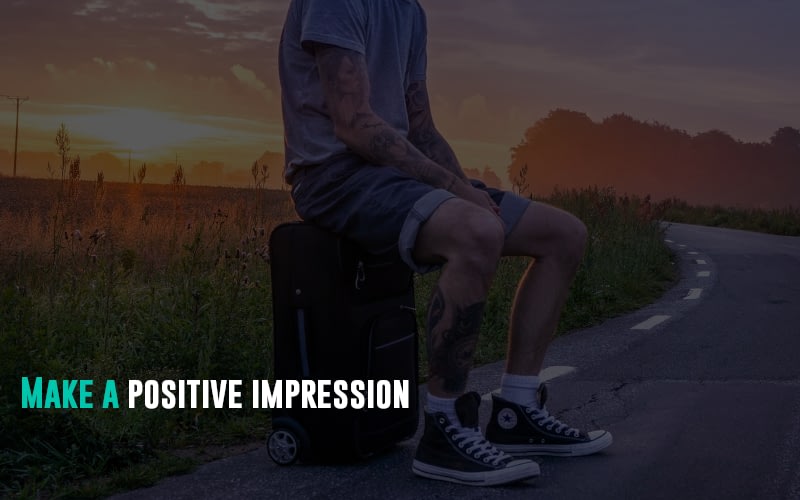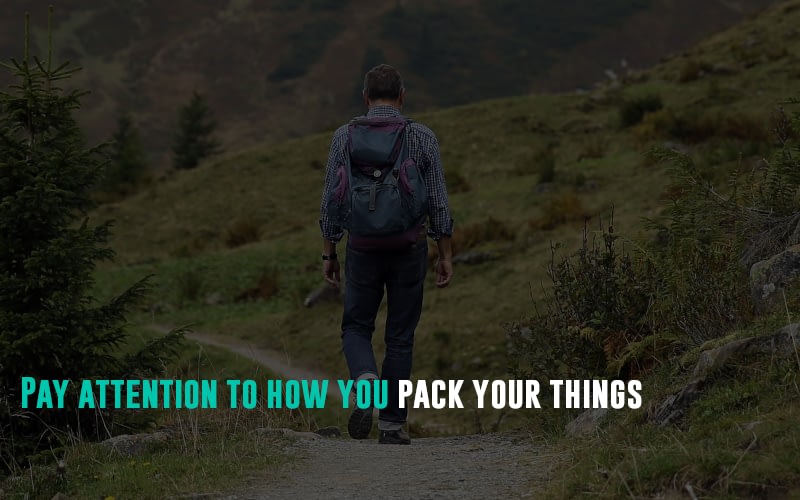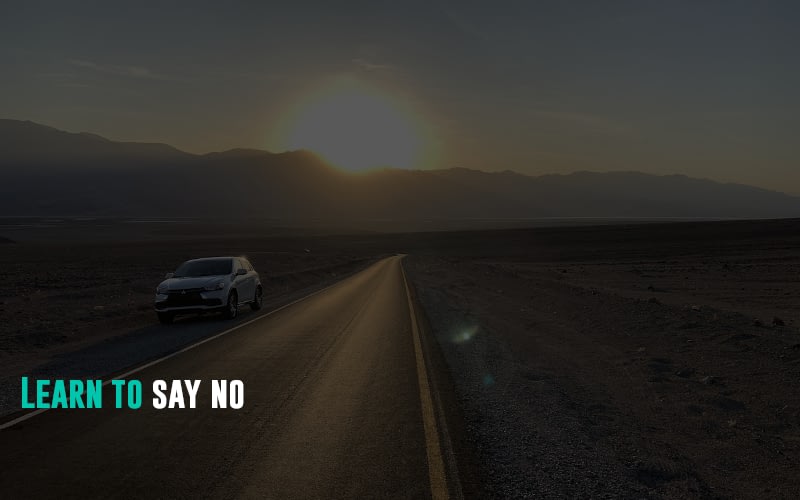Hitchhiking is an adventurous and cheap way to travel. It lets you meet new people and explore off-the-beaten-path places. You also get to feel free on the open road. Hitchhiking with friends is a fun bonding experience. But there’s a unique thrill to solo hitchhiking. Solo traveling gives you the freedom to make your own schedule. You can take sudden detours and fully soak in the local culture. But solo hitchhiking has its own challenges. It has safety concerns. Here, we’ll share key tips to help you explore the world of solo hitchhiking. We’ll cover preparing for your trip, staying safe, and making the most of your adventures on the road.
Featured Image Source
The Basics of Hitchhiking
Hitchhiking may seem like a simple concept – stick out your thumb and wait for a ride. But there are some key techniques. They improve your odds of getting picked up. They also make hitchhiking better. Here are some key basics:
- Location is crucial. Position yourself in a safe, legal spot. It should have good visibility for drivers. Good spots include on-ramps, gas stations, or wide shoulders. Avoid blind curves or areas with low visibility.
- Make eye contact and smile at drivers to increase your chances of getting picked up. A friendly, confident demeanor goes a long way.
- Use clear signaling. Stick out your thumb or hold a sign indicating your desired destination. Keep it simple and readable from a distance.
- Pack light, but be prepared. Carry a small backpack with essentials like water, snacks, a warm layer, and basic safety items. Avoid looking like you’re moving apartments.
Don’t go for your first hitchhike on your own
When you are traveling as a solo hitchhiker, your experience should be a shared one. As you know, there are several safety concerns regarding hitchhiking, especially for women. However, you don’t want the worries to weigh you down the first time. So, we recommend your first hitchhike with a companion. It should be someone you trust. They can show you the ropes and help you develop a feel for best practices. This will ensure you have someone to rely on. If something goes wrong on your first hitchhiking attempt, Also,
- Have a backup plan, like enough money for a bus or train ticket if needed.
- Trust your instincts. If a situation doesn’t feel right, it’s okay to pass on a ride.
Making a Positive Impression
When you hitchhike, it’s important to put yourself in the shoes of the people driving their vehicles. Would it feel safe to hand a ride out to someone who doesn’t look clean and well-dressed? No, right? So, you must dress well and look like a person who can be trusted. Of course, there’s no need to be elaborate. This exercise aims to make a good impression through your appearance. It should motivate drivers to stop and talk with you. During discussions with drivers, you must be polite and show good manners. Who knows? You might just come across the same drivers somewhere else on your travels.
Here are some tips for presenting yourself well: They will increase your chances of getting a ride:
- Maintain a neat, clean appearance. While you don’t need to dress up, avoid looking overly unkempt or disheveled.
- Smile and make eye contact with drivers. A warm, friendly demeanor can go a long way toward putting drivers at ease.
- Be polite and courteous when interacting with potential rides. Say please and thank you, even if they don’t pick you up.
Use Signboards
- A clear sign shows your destination. It helps drivers see if they’re headed the same way. Dry-erase boards work well for this.
- Consider having a short, rehearsed introduction about yourself and your journey. This can help break the ice and make drivers feel more comfortable.
- Avoid anything that could seem intimidating. This includes aggressive body language or offensive clothing.
- Be patient, and don’t become visibly frustrated if cars pass you by. Negativity can deter potential rides.
Remember, the impression you give in the first few seconds can make or break your chances. By being friendly and trustworthy, you’ll have a better hitchhiking experience.
Packing Smartly
As a solo hitchhiker, how you pack can greatly affect your comfort, safety, and chances of getting rides. Here are some tips for packing smart:
Pay attention to how you pack your things
Drivers are more likely to pick up someone who doesn’t look burdened. They’re less likely to pick up someone who looks burdened. Keep your load compact and manageable.
- Use a backpack or small duffel bag rather than multiple bags or large suitcases. This looks less cumbersome.
- Pack versatile, multi-purpose items. They can be layered or serve multiple functions. This will cut down on bulk.
Essential gear for solo hitchhikers:
- Reusable water bottles and non-perishable snacks
- Rain jacket/poncho and warm layer
- Basic toiletries and a first-aid kit
- Phone charger, power bank, and cash
- Map or offline GPS
- A sleeping bag or a light tent in case you need to camp
- Roll clothes tightly and use stuff sacks to maximize space in your bag.
- Don’t overpack! You’ll be carrying everything, so stick to just the necessities.
- Keep valuables safely stowed in your main bag rather than in pockets.
By packing smart and condensing your gear, you’ll look more appealing. You’ll look more appealing to potential ride offers. You’ll also be better prepared for life on the road as a solo traveler.
Safety Considerations
Hitchhiking alone has risks. So, your top concern should be your safety. Here are some key safety considerations to keep in mind:
Strategies for staying safe while hitchhiking alone:
- Tell friends/family your rough route and check in regularly.
- Avoid hitchhiking at night or in remote areas when possible.
- Only accept rides from trusted sources, like families, if you can.
- Trust your instincts; if a situation feels off, decline the ride.
- Carry basic self-defense items, like a whistle or pepper spray.
- Know the emergency numbers and resources for your location.
Learn to say no to rides that make you uncomfortable
Don’t feel obligated to get in a car. This is true if the driver seems impaired, makes you uneasy, or if there are other odd circumstances.
Imagine this. You’re waiting for a ride with your thumbs up. Suddenly, a car arrives. The driver is a bit too eager to make you hop aboard. Of course, this doesn’t necessarily mean the driver’s intentions are bad. However, if you feel something is off, say no and wait for another vehicle. A hitchhiker can get desperate after a long wait. But they must remember that safety is most important. Solo female hitchhikers have to trust their instincts and reject overzealous advances.
- Have a backup plan, like camping gear or money for transportation.
- Avoid getting in cars with multiple unrelated passengers.
- Keep your belongings close and be aware of your surroundings.
- Research common hitchhiking scams for the areas you’ll travel through.
Cultural Considerations
When hitchhiking alone across regions and cultures, be aware of local norms. Be aware of traditions. Knowing about other cultures can help a lot. It can lead to positive interactions and prevent accidental offenses.
Respecting cultural norms and customs in different regions:
- Research common cultural customs. These include greetings, body language, and traditions. Do this before hitchhiking in a new area.
- Dress conservatively if needed to respect local modesty standards.
- Be aware of cultural viewpoints towards solo female travelers.
- Learn the local laws about hitchhiking. It is illegal in some places.
- Learn a few basic local phrases to help break the ice.
Communicating effectively with potential drivers:
- Have a basic introduction about yourself and where you’re going in the local language.
- Use clear body language, gestures, and facial expressions to bridge language barriers.
- Carry a phrasebook or translation app to overcome basic communication hurdles.
- Be an active listener and observer to help gauge cultural cues.
- Stay open-minded and avoid showing obvious judgment towards cultural differences.
Fun Facts and Stories
Hitchhiking has a rich history and culture surrounding it. Here are some fun facts and stories. They will help you appreciate this adventurous way of traveling.
Interesting anecdotes and historical tidbits:
- The term “hitchhiking” came from the idea of hiking while getting rides. It combines “hike” and “hitch” a ride.
- Jack Kerouac’s iconic novel “On the Road” helped make hitchhiking culture popular. It made it romantic in the 1950s and 1960s.
- During World War II, American soldiers were told to hitchhike. They did this because of gasoline rationing.
- In 1979, a German student spent 4 years hitchhiking over 460,000 miles. He traveled across 4 continents on a single journey.
- The tiny Pacific island of Niue has a designated “Hitchhikers’ Pull-Off Zone” for safe rides.
Entertaining hitchhiking stories:
- A famous physicist once picked up a hitchhiking Albert Einstein. He didn’t recognize him until after dropping him off.
- A woman hitchhiked across the U.S. dressed as a bride after being left at the altar as a personal adventure.
- An Australian man hitchhiked. He was carrying just a pumpkin. He did it to raise funds for an endangered parrot species.
Weather Wisdom
As a solo hitchhiker, you’ll be at the mercy of the elements. Knowing how to prepare for and navigate different weather conditions is crucial for your safety and comfort on the road.
Keep an eye out for the weather forecast for the areas you’ll be traveling through. Sudden storms, extreme temperatures, or other inclement conditions can drastically impact your hitchhiking experience.
Even if you are dressed well, there’s no guarantee that you’ll be given a ride quickly. Depending on your luck, you may have to wait several hours before getting a ride. In such a scenario, you must keep track of the weather. We recommend doing travel research for the location you’re traveling to so you know how the weather behaves in that climate.
Preparing for different weather conditions:
- Pack proper layers and rain gear like jackets, ponchos, warm hats/gloves
- Wear moisture-wicking base layers in hot or humid climates
- Have a lightweight tarp or tent in case you need to camp out
- Pack electrolyte replacements and extra water for heat waves
- Wear proper sun protection like hats and sunscreen
- Insulated boots and thermal layers are musts for cold weather
- Bring an emergency blanket/bivvy in case you get stranded
In addition to gear, be prepared to adjust your hitchhiking strategy based on the weather:
- Seek sheltered waiting spots in rain/snow storms
- Avoid remote areas if severe weather is forecast
- Take more frequent breaks to rest/hydrate in extreme heat
- Layer up and keep moving to stay warm in cold conditions
Conclusion
Hitchhiking alone is unique and adventurous. It offers freedom, spontaneity, and the chance to connect with locals on a deeper level. Be prepared. Stay alert. Accept the challenges of this mode of travel. Doing so, you’ll surely have unforgettable experiences and make lasting memories. Embrace the open road. Trust your instincts. Let the journey unfold in its unpredictable glory.
Travel planning is a bit hectic, but with some help, it can be a walk in the park. A top trip planner like Travel-Wise can help you with all your travel needs and make your vacation memorable.






